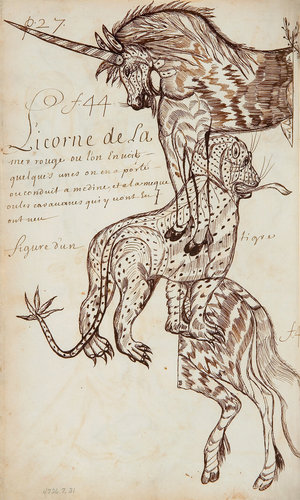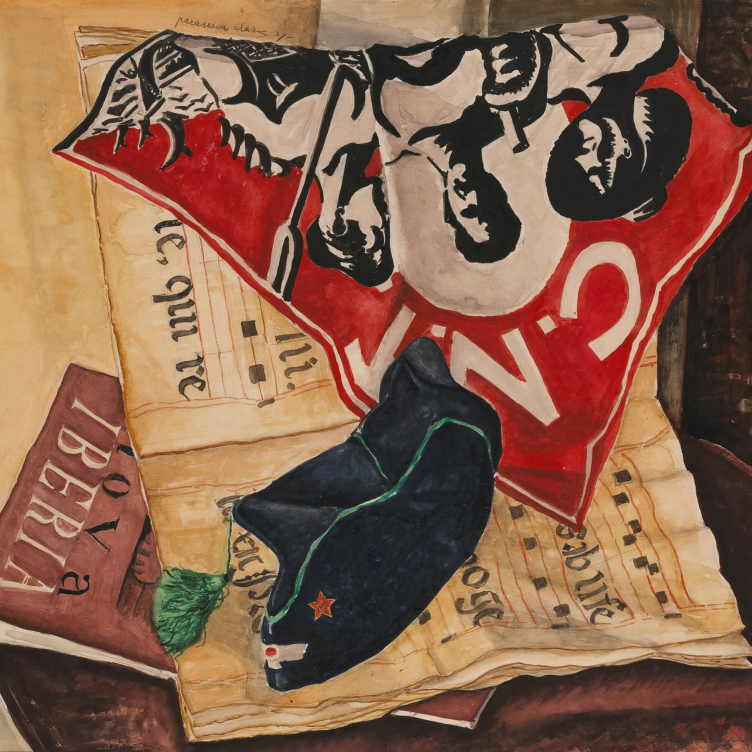In his Codex Canadensis, the Jesuit documentarian of seventeenth-century Canada Louis Nicolas (1634–post 1700) begins the section on the wildlife he observed in New France with this extraordinary depiction of a tiger and the mythological unicorn. Nicolas was certain that unicorns existed and insisted he had seen one killed. But he also knew that neither the unicorn nor the tiger were native to the New World. So why would he include these animals in a book about New France?

Louis Nicolas, Unicorn of the Red Sea (Licorne de La mer rouge), n.d.
Ink on paper, 33.7 x 21.6 cm, Codex Canadensis, page 27, Gilcrease Museum, Tulsa, Oklahoma
Paradoxically, Nicolas used the example of the unicorn to emphasize the importance of direct observation over purely bookish information. The creature would disparage “les gens de cabinet” who didn’t believe in unicorns simply because they had never travelled outside their parish. As he wrote in the The Natural History of the New World (Histoire naturelle des Indes occidentales):
“I do not know what to say about the appalling error that has crept in even among many learned people who are otherwise very knowledgeable, but have seen nothing of the admirable things produced by nature because they have never lost sight of their parish church tower, and who hardly know how to get to the Place Maubert or the Place Royale without asking the way. I say that these people are stubborn to insist that there is no unicorn anywhere in the world.”
This Spotlight is excerpted from Louis Nicolas: Life & Work by François-Marc Gagnon.
 Stitching the Archives
Stitching the Archives
 A Working-Class Hero
A Working-Class Hero
 Imagining Entangled Futures
Imagining Entangled Futures
 Bridging Far and Near
Bridging Far and Near
 Soft Power
Soft Power
 Imagining Emancipation
Imagining Emancipation
 A Priceless Portrait
A Priceless Portrait
 Meditation in Monochrome
Meditation in Monochrome
 Making His Mark
Making His Mark
 Honour and Sacrifice
Honour and Sacrifice
 A Monstrous Vision
A Monstrous Vision
 Remote Beauty
Remote Beauty
 Pride and Resistance
Pride and Resistance
 Dressed for Danger
Dressed for Danger
 Masks from the Past
Masks from the Past
 Lessons from the Land
Lessons from the Land
 A Cultural Hero
A Cultural Hero
 Food for Thought
Food for Thought
 A Passion for Activism
A Passion for Activism
 Starvation and Scandal
Starvation and Scandal